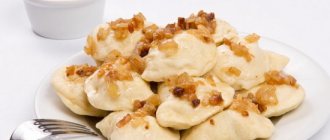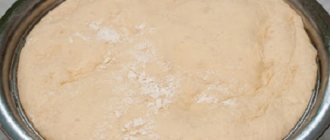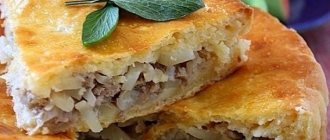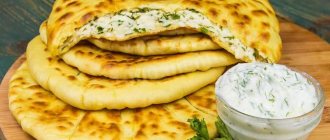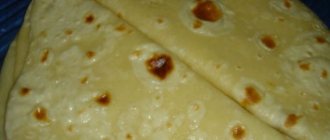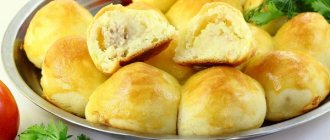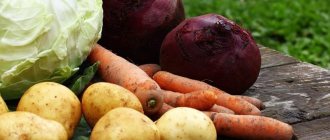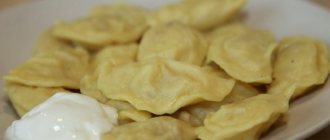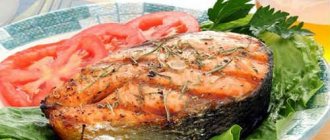Ingredients:
- 400 grams - flour
- 1 tablespoon - sugar
- 1 teaspoon - yeast
- pinch - salt
- 2 pcs. - eggs
- 130 ml. - water
- 2 table. spoons - butter
- 1 kg. - chopped meat
- 1 PC. - onion - fry into mince
- 500 gr. - bones or meat for broth
- - seasonings for broth
- 1 piece - onion - for broth
- 1 piece - carrot - for broth
- to taste - garlic - for broth
COOKING TIME 4 hours, 30 minutes
Rasstegai are filled pies with an open top, baked in the oven. Their interesting feature is that after baking (while the pies are still hot), a small amount of broth (two tablespoons) is poured into each pies. This manipulation makes the pies a truly amazing dish - they turn out juicy and very tasty.
Pies are served with soups and broths. Pies with fish, for example, are served with fish soup or fish broths. Pies with meat are served with meat broth, and pies with mushrooms are served with mushroom broth or soup.
Small pies, shaped like a boat, are served as an appetizer with grainy caviar, or as a first course, such as solyanka or crayfish soup.
In this article I have collected a lot of information about the wonderful old Russian pies - rasstegai. The information offered is divided into 4 large parts:
1) a recipe for classic pies filled with meat, with step-by-step cooking instructions and, of course, photographs
2) methods of preparing dough for pies
3) Options for fillings for pies
4) Forming and baking pies
The second, third and fourth parts are for “advanced” cooks, for those who are interested not just in the recipe, but also in the theory of preparing dough, possible variations of fillings, as well as information on how to make pies beautiful, that is, methods of shaping them, working with test.
RECIPE FOR PIES WITH MEAT - STEP-BY-STEP PREPARATION WITH PHOTOS
You will need:
For the dough: 400 grams of flour, 130 ml. water, 1 egg, 1 teaspoon yeast, 1 tablespoon sugar, 2 tablespoons butter, salt.
For the filling: minced meat 600 grams, rice - 50 grams, 1 onion (onion), salt, pepper.
1 egg for greasing finished products before baking,
vegetable or meat broth (200 ml)
PASTE DOUGH
Preparation of the dough: first make a dough - slightly heat the water (slightly above room temperature), dissolve the yeast in the water, add a tablespoon of flour and a tablespoon of sugar. Let the dough sit for about 30 minutes and foam. When the dough is ready, knead the dough with it: melt the butter (should not be hot, just warm) and stir it into the dough. Add the egg, salt, and all the flour there. Knead the dough. Place the dough in a warm place to rise for 3 hours, covered with a damp cloth or kitchen towel. When the dough has risen (after 3 hours), punch it down and give it another hour to rise again.
MEAT FILLING FOR PIES
While the dough is rising, you need to prepare the filling. To do this, boil the rice in a large amount of salted water until tender - drain the water. Fry the minced meat until cooked, season it with salt and pepper, and fry the finely chopped onion separately. Mix together cooked rice, fried onions and fried minced meat.
BROTH FOR PIES
Also, as you remember, we will need broth to pour it inside the finished pies. – You can cook a simple vegetable broth - boil onions, carrots, parsley root, or parsley and dill stems for an hour. You can also add garlic, bay leaf and pepper to the broth.
– You can also cook broth from a cube (just dissolve a bouillon cube in water and cook for 20 minutes).
– You can cook broth from meat or bones. Personally, I took pork bones and beef bones (very cheap, great for broth) - not completely naked, with a little meat on them, covered them with water and cooked for 6 hours. While the bones were cooking, I added to the broth a whole carrot, an onion, a bay leaf, a lot of garlic (towards the end of cooking), a ready-made seasoning “mixture of 6 peppers”, which consists of black pepper, red and green paprika, white pepper, allspice, red pepper, coriander and mustard, cumin and sugar. I also added “adjika Ulyapskaya” - this is also a dry mixture of herbs and spices, which includes Adyghe salt, suneli hops, green pepper flakes, red pepper, sweet pepper, coriander, garlic, dried dill and parsley... in a word, into my broth from I added a whole bunch of seasonings and the broth turned out very spicy and rich. I not only poured it into pie, but also boiled small noodles in it and served it as a first course. Such bones can be bought at the market or in stores that sell raw meat.
FORMING AND BAKING PIES
Cut the finished dough into pieces. Roll the pieces into balls. Let these balls rise (gain fluffiness and air) - let them stand for 15 minutes. Roll each ball into a flat cake, place the filling in the middle of the cake, forming the filling into an oblong sausage, determining the future oblong shape of the pie. Pinch each pie, leaving the middle of the pie open.
Grease a baking sheet with butter and place the pies on it, at a distance of at least 5 centimeters from each other (they will still grow in the oven). Let them stand for another 15 minutes in a warm place (this is necessary for the dough to be fluffy in the finished pies, it needs to be allowed to stand and gain airy splendor). Brush the pies with beaten egg and bake in the oven for 10 minutes at 230 degrees. You need to pour broth into the finished pies - about 2 tablespoons.
TIPS AND OWN EXPERIENCE OF PREPARING PASTS
- I would also like to note that since my stove (oven) is not ideal for achieving humidity in the oven, I placed a saucepan with hot water at the very bottom of the oven - and the water slowly boiled away while my pies were cooking, moistening the hot oven. Thanks to this manipulation, the dough turned out to be quite moist - not dry.
- Even before baking the pies, I poured a tablespoon of broth into each pies - yes, before baking too, to moisten the filling. You could add the broth to the filling itself before molding the pies and carefully mix the filling again.
- You could rub a boiled egg into the filling (instead of rice). The filling would be more tender. In general, pies, by definition, are pies with a filling containing boiled eggs or rice, fish or meat.
- I didn’t want to bother with the dough... so instead of preparing the dough, as expected.... I roughly shoved all the ingredients into the bread machine, setting it to dough mode. After an hour and a half, the dough was ready, but I let it sit for another 3 hours so that it would rise and become fluffier. It turned out well, next time I’ll probably be too lazy to fully work with the dough... mix it properly with my hands.
METHODS OF PREPARING PASTE DOUGH
Yeast dough is used to prepare pies. There are two ways to prepare yeast dough for pies - straight and sponged. The straight method is perhaps more suitable for pies because the dough prepared using the straight method is mainly used for products with a small amount of baking. Baking means sugar, eggs and butter. And the sponge method is used more often for making richer products (sweet buns, for example).
YEAST
The amount of yeast that should be used to prepare dough for pies (as well as any other yeast dough) depends on many factors: the quality of the yeast, its variety (fresh pressed or powdered, quick-cooking or requiring time to start fermentation). Dry yeast that is sold in bags can also be different, for example, there are those that should be dissolved in liquid, and there are those that need to be added directly to the flour. Therefore, when you use yeast, you should read the instructions on the packet. In addition, the amount of yeast also depends on temperature conditions. In a cool room, the dough will have to rest longer (you may also need to add more yeast). In a warm place it will rise much faster and less yeast is needed.
WATER OR MILK (LIQUID FOR PIE DOUGH)
The same type of dough may require different amounts of water. On average, it is necessary to maintain a proportion of 45% - 55% of the weight of the liquid to the weight of the total amount of flour used in the dough. Variations depend on the quality of the flour, on its moisture content, on the quality and quantity of gluten contained in the flour: the more moisture and the less gluten the flour contains, the less liquid it absorbs, and vice versa. It is the release of gluten that we wait for when we let the dough stand (no matter what the dough is: either yeast or yeast-free - for ordinary dumplings or dumplings.) If you let the dough stand and absorb all the moisture, if you let all the gluten contained in the dough set, it will It will become elastic, moist and at the same time will not stick to your hands - forming products from properly prepared dough is a pleasure.
To obtain fluffy pies and for the airiness of the dough, you need to take flour with a gluten content of at least 35% - 40%, and this gluten must be of high quality.
Unfortunately, now on the shelves (judging by the norms of the flour-water ratio in ancient recipes) we can see flour of very low quality, with a large amount of moisture contained in it and a small amount of gluten. And from my own experience I can say that today, on average, three times more flour is required than liquid to prepare yeast dough. Accordingly, it is impossible to give the final reinforced concrete proportions of the water-flour ratio in recipes, because it is not known what quality of flour you are using. But on average, I repeat, today, for the Russian standard flour market, this is one part water to 3 parts flour.
If you use milk instead of water (you can also use a proportion of 50% milk to 50% water), then your pie dough after baking will be tastier, more aromatic. Such pies will have a more shiny crust with a good color.
SUGAR
Sugar significantly improves the quality of the finished pies, or rather the pies dough, but it should be added to the dough strictly according to the norm. If you put too much sugar in the dough, firstly, it will be inappropriate, because we have pies, and they are usually prepared with fish and meat filling, therefore, you need to put very little sugar in the dough for pies, and secondly, too sweet dough slows down fermentation (poorly suited), does not bake well inside, but browns quickly. At the same time, if you put an insufficient amount of sugar in the dough, then practically no golden brown crust will form during baking. Therefore, it is better not to experiment with sugar and put it as much as indicated in the recipe.
EGGS
Eggs add fluffiness to the dough. If you put only yolks in the pies dough, the products will turn out more tender and crumbly.
PREPARING PASTE DOUGH IN A SAFE METHOD
Pour liquid (water or milk) heated to 35 - 40 degrees into a saucepan or dough mixing machine (if you have one), or into a bread machine. That is, the temperature of the liquid is slightly above room temperature - very pleasant for the hands. Dissolve yeast, sugar, salt separately in a small amount of water or milk, after dissolving all this, strain through a sieve and mix with the total amount of liquid taken for preparing the dough.
If your room is cool (in winter), you need to use warm water so that at the end of kneading the dough has a temperature of 28 - 32 degrees. In this case, dissolved yeast should be added to the dough only before the end of kneading (otherwise, it will simply die in hotter water).
Mix flour sifted through a sieve into the prepared liquid and knead the dough. Leave some of the flour to dust the working surface of the table, where we will form the pies. By the way, we sift the flour through a sieve so that it becomes looser; this will really help make the pies more fluffy, so don’t be lazy and skip this step. Before finishing kneading, add animal fat, melted to the consistency of sour cream, or butter or vegetable oil to the dough. Well-kneaded dough has a homogeneous structure, it lags well from the hands and from the walls of the dish.
Shape the kneaded dough into a ball, lightly sprinkle with flour, cover with a clean napkin and place in a warm place to ferment. The recommended temperature of the place where the dough will stand is 27 - 35 degrees. The required time is 3 - 4 hours. The temperature of the dough during fermentation should be 29 - 30 degrees.
WHY KNEW YEAST DOUGH
During the fermentation process, yeast releases carbon dioxide, which loosens the dough. However, too much carbon dioxide slows down the fermentation process, so to free the dough from excessively accumulated carbon dioxide, knead it. When kneading, the dough is enriched with oxygen, which promotes the development of yeast and significantly increases the volume of dough and finished products (in our case, pies). Dough made from flour with good gluten should be kneaded 2-3 times, from flour with poor gluten - 1 time. The first warm-up should be done after an hour and a half, the second after two and a half.
SPRAY METHOD OF PREPARING YEAST DOUGH FOR PASTIES
Heat 80% of the total amount of water or milk for the dough to 30 - 35 degrees, dissolve the yeast in the liquid, add 50% (exactly) half of all the flour required by the recipe. The consistency of the dough should be similar to the consistency of thick sour cream. Sprinkle the dough with flour, cover with a cloth or lid and leave to ferment for 3-4 hours at a temperature of 30 - 35 degrees. During this time, yeast multiplies very quickly in the dough, releasing a very large amount of carbon dioxide, the dough increases very much in volume. Many bubbles appear on the surface of the finished dough. When the dough has settled a little, add the rest of the ingredients and knead the dough in the same way as straight dough. Let the dough ferment for another 2 hours, during which time do one kneading.
CORRECTING TEST DISADVANTAGES
- Poor fermentation or lack thereof. This is the main disadvantage of yeast dough, which is more common than others. If the reason is that the room is too cold, you just need to place the dough in a warm place and let it stand. If the reason is that the liquid, for example, in which the yeast was placed was too hot and the yeast died, simply add new yeast to this dough, diluted in a liquid of a suitable temperature. If the quality of the yeast itself is poor (what else can you think about if the temperature was appropriate all the time), simply add (stir) other yeast into the dough.
- Over-salted dough does not ferment well. Pies made from this dough will turn out pale and crack on the sides. They will have a salty taste. To correct this deficiency, you need to knead a new portion of dough and combine it with the over-salted one.
- If there is a lack of salt in the dough, the salt must be dissolved in water and this water must be mixed into the dough. The pies will turn out unleavened; if you don’t add enough salt to the dough, their structure will be vague.
- Oversweetened and undersweetened dough is corrected in the same way as oversalted and undersalted dough.
Cooking method:
Chicken broth recipe for pies:
For the broth, choose a medium chicken or chicken weighing about 1.5 kg. Rinse the carcass well, remove remaining feathers if necessary. Place the chicken in a saucepan, throw in the peeled carrots and onions, and add three liters of water. Before the broth begins to boil, skim off the foam, add salt, bay leaf and black peppercorns. Broth for pies from a young broiler will be ready in 50 - 60 minutes, from homemade chicken - in about a couple of hours.
Chicken filling for pies:
To prepare the filling for pies with chicken, you need to remove the boiled chicken. Cool it down.
Chop the onion and fry it until half cooked in a mixture of vegetable and butter.
Remove approximately 500 - 600 grams of chicken pulp from the bones.
Chop the chicken finely and add to the onion, continue to fry everything for another 10 minutes. The chicken filling is ready.
Pie dough:
For pies, unsweetened yeast dough is used. You can prepare it in any way or use the following recipe:
Dissolve one packet (11 g) of instant dry yeast in a glass of warm milk. Pour in the melted butter and add one egg, add a spoonful of sugar, a pinch of salt and about 400 - 450 grams of flour. Knead into a soft elastic dough, adding a little more flour if necessary.
Cover it with a towel and place it in a warm place for a while. The yeast dough for pies will be ready in about an hour.
All that remains is to form the pies and bake them in the oven.
OPTIONS FOR PIE FILLINGS
The classic filling for pies is fish, or rather minced fish. Often the filling for pies is also made from vizigi with eggs, or fish with rice, or with meat and eggs or mushrooms. In addition, the minced meat, when you have already formed your pies, can be covered with a piece of fish - a small slice: salmon, salmon, chum salmon or boiled sturgeon fish.
The filling for pies should not be crumbly, but moist, it should be moldable and not dry. Therefore, when preparing the filling, we not only fry the minced meat, but also pay attention to the sauces with which this minced meat is seasoned.
- MINT MEAT FOR PIES WITH ONION FIRST OPTION
You will need: any meat (beef, for example, 1 kg), lard or fat, or vegetable oil, herbs (parsley and dill, a bunch), onions (1 pc.), flour (4 - 5 tablespoons), pepper.
Cut the flesh of raw beef, lamb or lean pork into pieces of 40 - 50 grams, fry with fat, transfer to a bowl, add water or broth so that the water just covers the meat, and simmer until done. Drain the broth from the finished meat and use it to prepare the sauce. Pass the meat itself through a meat grinder, add sauce, salt, ground black pepper, herbs and mix well.
To prepare the sauce, lightly fry finely chopped onion in a frying pan, add flour fried for two minutes, dilute with the broth in which the meat was stewed, and, stirring, cook for 10 - 15 minutes. The sauce should have the consistency of thick sour cream
- MINT MEAT FOR PIES WITH ONION SECOND OPTION
You will need: any meat (beef, for example, 1 kg), 3 boiled eggs, lard or fat, or vegetable oil, herbs (parsley and dill, a bunch), onions (1 pc.), flour (4 - 5 table . spoons), pepper.
Pass raw meat through a meat grinder. Place the meat in a layer of no more than three centimeters on a greased frying pan or baking sheet and simmer in the oven until cooked. Drain the juice released from the meat during poaching, prepare a sauce from this juice as described in the first method, and once again pass the meat through a meat grinder along with separately fried onions. Add sauce, salt, pepper, finely chopped herbs and mix everything. You can add boiled, finely chopped eggs to the finished minced meat.
- MINT MEAT FOR PIES WITH ONION THIRD OPTION
You will need: any meat (beef, for example, 1 kg), lard or fat, or vegetable oil, herbs (parsley and dill, a bunch), onions (1 pc.), flour (4 - 5 tablespoons), pepper.
Boil the meat, pass through a meat grinder with sautéed onions. Fry lightly, add salt, spices, sauce, herbs and stir.
- MINTING LIVER FOR PIES
You will need: lung (300 grams), heart (200 grams), liver (200 grams), lard or fat or vegetable oil, one onion, 2 tablespoons of flour, salt, pepper, spices to taste
Cut the heart and lungs. Rinse the liver and cook for 2 hours in a container with a closed lid with the addition of salt and pepper.
Cut out the bile ducts from the liver, remove the film (if there is all this), cut into flat pieces of 1 centimeter each, salt, fry until the blood disappears.
Then pass the lungs, heart and liver through a meat grinder and heat in a frying pan with fat, season with spices and sauce, just like minced meat.
- MINTED FISH FOR PIES
You will need: fish 1 kg, onions - 1 pc, rice - 50 grams, vegetable oil for frying, flour - 4 tablespoons, salt, pepper, herbs - parsley and dill. Spices to taste.
Simmer fresh fish fillets without skin and bones on a baking sheet in the oven, or in a frying pan or saucepan, covered with a tight lid, for 15 - 20 minutes.
Drain the broth and prepare a sauce from this broth: lightly fry finely chopped onion in a frying pan, add flour fried for two minutes, dilute with the broth in which the fish was stewed, and, stirring, cook for 10 - 15 minutes. The sauce should have the consistency of thick sour cream.
Chop the finished fish not very finely with a knife, add boiled rice, sauce, finely chopped herbs, pepper and mix well.
- MINTING FROM VIZIGI FOR PIES
You will need: fresh or dried viziga - 1 kg, rice - 100g, onions - 2 pcs, ghee, ground pepper, parsley, salt.
Boil fresh viziga in salted water - 10 grams of salt per 1 liter of water. Drain in a colander, pass through a meat grinder or chop with a knife, add boiled rice, onions fried in fat, parsley, ground pepper and salt.
If the minced meat for pies is prepared from dried viziga, then 3 - 4 hours before cooking, it should be soaked in cold water.
- MINDING MUSHROOMS FOR PIES
Peel fresh mushrooms (champignons can be used), rinse, boil, cut into slices, then fry with butter, add salt, add sour cream sauce (preparation method below) and boil. You can add boiled rice to this minced meat.
Sour cream sauce is prepared as follows: lightly fry finely chopped onion in a frying pan, add flour fried for two minutes, dilute with sour cream and water and, stirring, cook for 10 - 15 minutes. The sauce should have the consistency of thick sour cream.
- MINTING DRIED MUSHROOMS FOR PIES
Wash the dried porcini mushrooms and then boil them. Rinse the boiled porcini mushrooms again and then pass through a meat grinder, or finely chop with a knife and fry in fat. Prepare the sauce with the rest of the fat and mushroom broth: lightly fry finely chopped onion in a frying pan, add flour fried for two minutes, dilute with the broth in which the mushrooms were cooked, and, stirring, cook for 10 - 15 minutes. The sauce should have the consistency of thick sour cream.
Season the minced meat with the sauce. You can also add boiled crumbly rice to the mushroom mince.
Pie recipes
Initially, pie was stuffed with fish scraps and inexpensive vyaziga. During the period of popularization of the dish, expensive fish was placed in the filling. Today, the choice of minced meat depends on the imagination and taste of the housewife.
Open pies are filled with various fish - sardines, salmon, pike, trout, salmon, salmon and even herring. There are combined minced meats with the addition of rice, carrots, herbs and eggs. Some bake sweet pies with fruit filling.
Pie stuffed with fish
Pie with fish is a traditional dish that has become a classic. To prepare minced meat, you can combine several types of fish, add mushrooms, eggs or herbs for a variety of flavors.
To prepare this dish of Russian national cuisine, it will take 3 and a half hours. Fish pie is suitable for the dinner table. Calorie content of 100 g of pie is 223 kcal. An open fish pie goes well with rich fish soup or fish broth.
To prepare 8 servings you need to take:
- 125 g milk (can be replaced with water) at room temperature;
- 25 g fresh baker's yeast;
- 10 g table salt;
- 20 g granulated sugar;
- 2 large eggs;
- 35 g melted butter (margarine);
- 0.45 kg flour;
- 400 g fillet of any fish without bones;
- 1 onion;
- 55 ml cream.
Cooking algorithm:
- Place the dough. Add 25 g of baker's yeast to milk or water at room temperature. Stir until they dissolve. Pour 1 tbsp. l. sugar and a third of flour (about 150 g). Leave the batter for 30 minutes in a warm place. When the mass begins to rise and “bubble”, beat in 1 chicken egg, separate the yolk from the second egg (it will be used to brush the pie), and put the white into the dough. Add table salt and melted butter.
- Mix the dough well. It should be elastic and not stick to your hands. You don’t need to add a lot of flour, otherwise you can “clog” the dough so that it won’t rise. Leave to proof for 1.5 hours in a warm place. Cover the bowl with the dough with a towel.
- After 2 hours, knead the dough again and leave to rest for an hour. This is a recipe for a classic pie dough.
- Finely chop the onion and fry in vegetable oil in a frying pan until soft.
- Finely chop the fish fillet and place in a deep bowl. Add fried onions, salt and pepper to it. Pour in heavy cream. It is permissible to add chopped greens. Mix the minced meat.
- You can make pie in two ways - either roll the dough into a large layer and squeeze out circles with a glass (as for dumplings), or roll the dough into a rope and divide into small parts, roll them into balls, give 10 minutes to rest and flatten into flat cakes.
- Place a strip of minced meat onto the prepared layer of dough. Pinch the edges of the pie, leaving the middle open and giving the product an oblong shape.
- Place the opened pies on a baking sheet sprinkled with flour.
- Beat the egg yolk and brush the products with it.
- Place the pan with pies in a hot oven (210 degrees) and leave for 25 minutes.
- Remove the finished pies from the oven, pour broth or melted butter into the open core.
Mackerel stuffed with vegetables baked in the oven. Recipe with photo
Pies with minced meat
Meat pies are served with broth. They are equally delicious both hot and cold. The minced meat can be based on meat of your choice - poultry (turkey, chicken), pork, beef. The best combination would be minced pork and beef. To prepare “Moscow” pie, add chopped boiled chicken eggs to the minced meat.
The time spent on preparing the dish is 3 hours. Ideal as a main course for lunch. Calorie content: 253 kcal per 100 gram serving.
For 8 servings take the following number of components:
- 125 g warm (25 degrees) milk (or water);
- 25 g pressed baker's yeast;
- 2 large eggs;
- 0.45 kg flour;
- 10 g salt;
- 15 g sugar;
- 35 g butter;
- 400 g sirloin meat;
- 1 onion.
Cooking method:
- The dough is kneaded as for a classic fish pie.
- Prepare the meat - rinse and cut into pieces, mince using a meat grinder or blender.
- Place finely chopped onion in a hot frying pan with vegetable oil and fry it.
- Add minced meat, salt and a little black pepper to the pan and stir. Mass and simmer a little. Mash the minced meat well until it is crumbly. You can grind the finished minced meat again in a meat grinder.
- Use any of the methods described above to make flat cakes or dough circles.
- Place the minced meat on the dough, pinch the edges of the pie, giving it a characteristic pie shape.
- Place the finished products on a baking sheet sprinkled with flour.
- Beat 1 chicken egg. Grease future pies with this mixture.
- Place the products in an oven heated to 220 degrees and keep there for 25 minutes.
- Pour a few tablespoons of broth or melted butter into the open center of the finished pie.
Potato and meat pie
Another option for pies is with meat and potatoes. Pies are perfect for lunch. You can eat them with broth, soup or separately. Any meat is suitable for minced meat. A more tender filling is obtained by mixing pork and beef.
The production time for open pies is 3 and a half hours. A 100-gram serving of Russian cuisine contains 251 kcal.
Ingredients needed to prepare 6 servings:
- 100 g warm milk or water;
- 20 g melted butter (can be replaced with margarine);
- 2 eggs (one for the dough, the other for brushing the pies);
- 15 g baker's yeast or 55 g dry;
- 1 tbsp granulated sugar;
- 0.35 kg flour;
- 1/2 tsp. salt.
- 0.2 kg of meat or prepared minced meat;
- 4 small potatoes;
- bulb.
Preparation:
- Prepare regular sponge dough, as in the classic recipe.
- Wash the meat, cut it, twist it into minced meat.
- Fry the chopped onion in a frying pan.
- Place the finished minced meat in a frying pan with the onions, add pepper and salt. Mix the ingredients. Simmer for 10 minutes.
- Peel the potatoes and boil. Cook for 15-20, depending on the size of the vegetable. The potatoes should not be boiled, mash the finished vegetable into a puree.
- Make balls from the dough, after 10 minutes roll them into flat cakes. Add boiled potatoes and minced meat.
- Pinch the edges of the pie, leaving the middle open.
- Beat the egg. Brush the egg mixture onto the pies placed on a floured baking sheet.
- Place the mold in a preheated oven. Bake for 25 minutes at 210-220 degrees.
- Pour melted butter into the finished products.
How to cook stewed potatoes with meat
FORMING AND BAKING PIES
The finished dough for pies is divided into portioned pieces mechanically, semi-mechanically or manually. It is unlikely that in your kitchen there will be machines for mechanical or even semi-mechanical cutting of dough into portioned pieces of a certain weight, although such do exist. The so-called dough dividing rounding machines, which not only measure the required amount from a piece of dough, but also roll them into dough balls before forming and baking, so we will dwell in detail on the manual method of cutting dough for pies.
So, with the manual method of cutting the dough, it is laid out on the table, an even piece is cut off from the dough with a knife or scraper and this piece is rolled out into a rope (the so-called wick). Then, holding the end of the rope with your left hand, tear off a piece of dough with your right hand - just tear it off. If you manage to visit a restaurant where chefs and dough masters work, you will see that this is exactly how they work. Once you get the hang of it, you'll learn to do it pretty quickly. Having torn off a piece of dough in this way, the cook weighs it, managing to remove the piece of dough that was weighed before from the scales with his other hand. Here's a manual conveyor.
Please note that when cutting the dough, the weight of the dough pieces should be 15% greater than the weight of the finished pie. Then, when baking pies, the dough shrinks, the so-called “bake”. Moisture and weight evaporate from the pie (and, of course, dough), and accordingly decrease.
Pieces of dough are sprinkled with flour, placed on a table sprinkled with flour, and the pieces are rolled into balls. These balls are placed seam side down on the table. The dough balls should be allowed to rest for 7 - 10 minutes, and only after this proofing should the pies be formed. Place the dough balls for proofing at a short distance from each other so that during proofing, if they increase in size, they do not touch each other and do not become deformed or stick together.
The pies are formed as follows: each ball of dough is rolled out into a flat, one and a half centimeter cake, the filling is placed in the middle, giving the filling the shape of a sausage (which determines the future shape of the pies). Next, the flatbread with filling is sealed on both sides, leaving the middle uncovered. The seam itself can be made decorative - decorated with beautiful tucks. The hole in the center of the pie can also be given different shapes - you can shape it like a flower, with blooming petals - experiment! Pies can be either round or oval (boat-shaped).
WHY DO YOU NEED TO PROOF PASTS BEFORE BAKING?
After you fill the pies with the filling and form them completely, they need to be allowed to stand again. While forming the pies, all the gas evaporated from the dough. The dough has become dense and difficult to bake. Ready-to-bake pies need to be thawed in a warm and humid place. You need to repeat the fermentation process in the dough again. But with excessive proofing, the pies can become mushy (and if not proofed enough, they will remain poorly baked, tight and damp). 20 minutes will be enough.
It is best to place the finished pies on a greased baking sheet in a checkerboard pattern, at a minimum 5-centimeter distance from each other. After all, they will greatly increase in size during baking.
LUBRICATION AND SPRAYING PASTES
To give the pies shine and a seductive ruddy color, before baking (after the last proofing), they are brushed with egg yolks, beaten eggs or melange to give the dough shine. Water is sometimes added to melange. To give the crust of the pies a pleasant aroma, they can also be greased with butter before baking. You need to lubricate the products with a soft brush, so as not to wrinkle them, 5 - 10 minutes before baking. After greasing, the pies can be sprinkled with specially prepared toppings - this will make the dish even more beautiful. You can sprinkle with bread crumbs or flour sprinkles - a mixture of flour, butter and eggs, grated to loosen.
The baking temperature and time depend on the oven, the size of the pies, and the time at which they were proofed (completely or not fully proofed items). On average it is 230 degrees, 7-10 minutes. In order to provide the necessary humidity in the oven, you can place a vessel with hot water on its bottom.
Pour 1-2 tablespoons of broth into the finished pies and serve immediately. Thanks to the broth, the pies are juicy.
SOURCES
The main source of information about pies for me was the good old book “Cooking”, published in 1965, edited by Alexey Ananyevich Ananyev. Many people probably still have these books from their grandmothers. This book is simply a masterpiece - a lot of work has been put into it, this can be seen from the book, and from the large team of artists and authors who wrote this book. This is a small grain of the once great Soviet Union, which I cherish and value very much. I appreciate the quality, good quality, abundance of information and clarity of its presentation.
